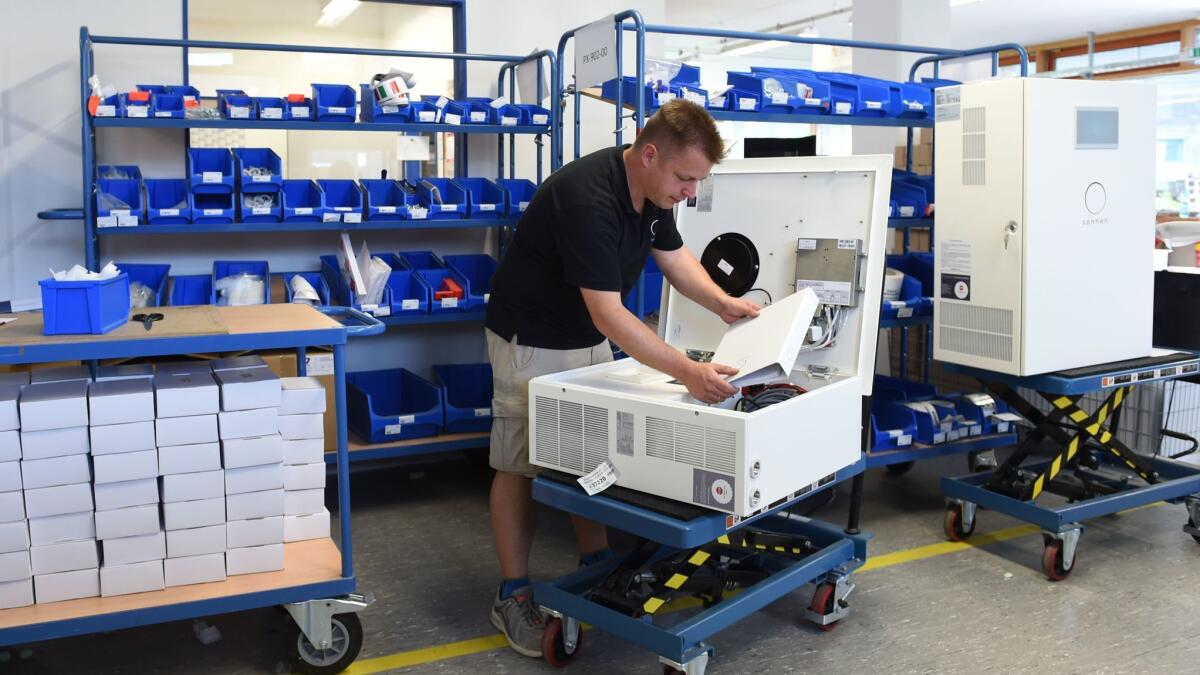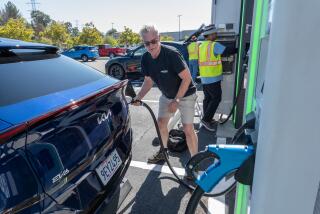Battery boom is expected to attract $1.2 trillion in investment by 2040

The battery boom is coming to China, California and basically everywhere else — and it will be even bigger than previously thought.
The global energy-storage market will surge to a cumulative 942 gigawatts by 2040, according to a new forecast from Bloomberg NEF published Tuesday, and that growth will necessitate $1.2 trillion in investment. Sharply falling battery costs is a key driver of the boom. BNEF sees the capital cost of a utility-scale lithium-ion storage system falling 52% by 2030.
But cost isn’t the only factor. Governments from China to California are spurring demand, as is the rise of electric vehicles and solar power. There’s also been a greater focus on storage for electric-vehicle charging as well as energy access in remote areas.
“Costs have come down faster than we expected,” said Yayoi Sekine, a New York-based analyst at BNEF. “Batteries are going to permeate our lives.”
The implications of cheaper batteries are far-reaching, upending multiple industries and helping spur technologies necessary to help fight climate change. Batteries power electric vehicles and enable machines to tap solar power.
Two important markets come into particular focus. China, which is building up its battery-manufacturing capacity, will be a central player in the boom. California, meanwhile, has pushed through a series of measures in recent years that will directly or indirectly spur more batteries, including legislation that would require all of the state’s electricity to come from carbon-free sources by 2045.
“Storage is just so sensibly the next step in the evolution of renewable energy,” said Edward Fenster, executive chairman of San Francisco rooftop-solar company Sunrun Inc. “If we’re going to get to 100% renewable energy, we’ll need storage.”
Here are six takeaways from the BNEF battery forecast:
• Annual energy-storage deployments are now forecast to exceed 50 gigawatt-hours by 2020. That’s three years earlier than BNEF’s outlook from just last year.
• Energy storage may be equivalent to 7% of the world’s total installed power capacity by 2040.
• The Asia-Pacific region will be home to 45% of total installations on a megawatt basis by 2040. Another 29% will be spread across Europe, the Middle East and Africa. The remainder will be in the Americas.
• The majority of storage capacity will be utility-scale until the mid-2030s. But then so-called behind-the-meter projects — installations at businesses, industrial sites and residential properties — will overtake utility-scale.
• A list of the leading battery countries is topped by who you would expect: China, the United States, India, Japan, Germany, France, Australia, South Korea and the U.K. South Korea dominates the market but will be overtaken by the United States early in the 2020s — and both will later be eclipsed by China.
• Storage is coming to developing countries in Africa, too, BNEF said, when utilities recognize that the combination of solar, diesel and batteries in “far-flung sites” is cheaper than extending the power grid or building a fossil-only generator.






